- Job postings on a job search website (e.g., craigslist, indeed, electronic version of a newspaper, etc.)
Most EB2 green card petitions and EB3 green card petitions require an approved PERM (Program Electronic Review Management) labor certification to show that there are no qualified, available, able, and willing U.S. workers for the job position that is offered in the green card petition. The purpose of the PERM labor certification process is to protect U.S. workers.
To obtain an approved PERM labor certification, the U.S. sponsoring employer would need to make an effort in finding U.S. workers through a recruitment process that includes posting job advertisements in various publications and interviewing the applicants who respond to the job postings. If no U.S. workers were found for the job position upon completion of the recruitment process, the U.S. sponsoring employer can then file a PERM labor certification application to the DOL and continue to file an employment-based green card petition (Form I-140) for the foreign worker with the USCIS after the PERM labor certification application is approved.
- 1.
- a.
- b.
- c.
- d.
- 2.
- a.
- 3.
- 4.
- a.
- b.
Table of Contents
To obtain an approved PERM labor certificate from the U.S. Department of Labor (DOL), both the foreign worker’s qualifications and the job position must satisfy the requirements of the PERM labor certification.
A qualified person under the PERM labor certification must (1) meet the minimum qualifications required for the job position, and (2) cannot gain qualification on the job unless (a) the U.S. sponsoring employer shows that it is not able to train a worker to qualify for the job position anymore or (b) the foreign worker gained the qualification under the U.S. sponsoring employer in a job position (including work as an independent contractor) that is not substantially comparable to the job position for the green card petition. Substantially comparable jobs under the PERM labor certification are typically when the two jobs spend at least 50% of their working hours in the same job duties.
A qualified PERM labor certificate for employment-based green card petitions must (1) be for a permanent (i.e., indefinite duration and assured continuation) and full-time (i.e., typically at least 35 hours per week) job position, and (2) be sponsored by a U.S. employer (which means that an individual under a nonimmigrant visa status cannot sponsor a green card petition) that has a FEIN (Federal Employer Identification Number).
There are 4 main types of job positions under the PERM labor certification:
- Professional PERM job positions: job positions that require at least a bachelor’s degree.
- Nonprofessional PERM job positions: job positions that usually require less than a bachelor’s degree.
- College and university teacher PERM job positions (special processing): job positions for teachers and professors in a college or university.
- Professional athlete PERM job positions (special processing): job positions for professional players in a team that is a member of an association that has at least 6 professional sports teams with a combined annual revenue higher than $10,000,000 or a minor league team affiliated with such an association.

Professional & Nonprofessional PERM Job Positions
The job positions under the PERM labor certification application are divided into 2 types: (1) professional occupations (which requires at least a bachelor’s degree), and (2) nonprofessional occupations (which usually do not require at least a bachelor’s degree).
The job requirements under the PERM labor certification cannot be more stringent (higher) than what is normally required for that job position (e.g., requiring certain language skills that are not inherent to the job position itself) unless it is due to a business necessity (which is where the business performance will be negatively affected without imposing that requirement).
What is normally required for a job position does not include requirements that exist just for the U.S. sponsoring employer’s personal preference or convenience but are for the safety and the operation of the U.S. business. In other words, when the job requirements listed in the PERM labor certificate are higher than the norm, it must be shown that a worker cannot work in that job position without having the job requirements that exceed what is normally required.
The PERM labor certification has special procedures for college and university teachers (or professors) and professional athletes.
College and University Teachers (Special Processing)
College and university teachers (or professors) have different requirements under the PERM labor certification: (1) the U.S. sponsoring employer (college or university) can offer a teaching position to the best qualified worker (as opposed to anyone that satisfies the standard minimum qualifications) and (2) the prevailing wage determination is based on what is given by other college and university employers.
Faculty members may be able to qualify as a teacher if the job position requires teaching in a classroom. For example, an instructional coordinator in the library services division of the school qualified as a teacher because the job position required teaching in a classroom and creating teaching material such as course syllabi.
College and university teachers under special processing of the PERM labor certification should (1) be selected (hired) after going through a competitive recruitment and selection process within the 18-month period prior to filing the PERM labor certification, (2) the foreign college or university teacher must be more qualified than all U.S. applicants and must meet the minimum qualifications for the job position at the time they were selected (hired) and when the PERM labor certification is filed, (3) at least 1 job posting was placed in a national level professional journal (can be an electronic journal) before recruitment started, and (4) the notice of filing was posted (which does not need to include the rate of pay and can be placed after completion of the recruitment).
U.S. applicants cannot be rejected if they are equally qualified as the foreign college or university teacher.
的工作職位(PERM的特別處理程序)-eng-1024x427.jpg)
Professional Athletes (Special Processing)
Professional athletes have different requirements under the PERM labor certification: (1) the prevailing wage rate will be based on the wage set in the sport’s professional league’s rules and regulations, and (2) an approved PERM labor certification can remain valid even if the athlete changes employers (however, the new employer must be a team in the same sport as the employer who sponsored the initial PERM labor certification).
Professional athletes are persons who are in:
- A team that is a member of an association that has at least 6 professional sports teams with a combined annual revenue higher than $10,000,000 (and the association governs the members conduct and regulates the contests and exhibitions that its member teams regularly participate in)
- A minor league team that is affiliated with such an association (listed above)
eng-1024x427.jpg)
There are certain situations that will trigger a case to be closely looked at by the U.S. Department of Labor (DOL) under the PERM labor certification process. For example, when the U.S. sponsoring employer requests a foreign language as a job requirement or when the foreign worker shows possible control over the U.S. sponsoring employer will typically trigger the U.S. Department of Labor (DOL) to examine the case more closely.
Business Necessity
In cases where the PERM job requirements are unusual (i.e., not considered as standard or normal), an audit may be triggered and most likely will need to be cured by showing that the unusual requirement is due to business necessity (i.e., it is required so the business can operate).
Some examples of when an audit may be triggered and may need to be justified by business necessity:
- Job requirements exceed (are higher than) what is listed in SVP/O*Net job zone
- Foreign language is listed as a job requirement
- The work schedule is non-traditional, multiple, rotating, split shift
- The U.S. sponsoring employer required different minimum requirements for the employees who worked in the same job position in the past (but this can be justified if there was a significant change in the circumstances, industry, technological capabilities)
- Cooking specialization (e.g., chefs and cooks for specific cultural or religious cuisine, or particular diet)
- The job position requires job duties from different occupations (e.g., a worker who is required to fly a plane and repair it would make the job position a pilot-mechanic but this can be justified if this is a normal requirement in the industry or geographic area)
- Requiring an educational degree with double majors (especially when the 2 fields of study are unrelated such as marketing and industrial engineering)
- Requirement of professional certifications unless required by state law
- The job position is for a live-in domestic service worker that does not involve medical or instructional services (e.g., nannies, housekeepers, maids, cooks, or other household staff) *The foreign worker must have 1 year of paid full-time work experience with another employer (that cannot be for their own family) as a domestic service worker

Foreign Language Requirement
Foreign language listed as a PERM job requirement is seen as excessive or restrictive unless it is inherent to the job position such as a foreign language teacher or translator. The U.S. sponsoring employer must show that a worker cannot do the job without being able to communicate in that foreign language. The need for the foreign language must be because it will affect the performance of the business which means it cannot just be because it is a preference or convenience.
Some examples of when the foreign language requirement may be allowed:
- A large majority of the U.S. sponsoring employer’s customers, employees, and contractors cannot communicate effectively in English and that there is a constant frequent need to communicate in the foreign language during business transactions with major customers
- The foreign language is needed for safety reasons in the working environment (i.e., to avoid workers getting injured at the worksite)
- The job position will include work of expanding the business into foreign markets
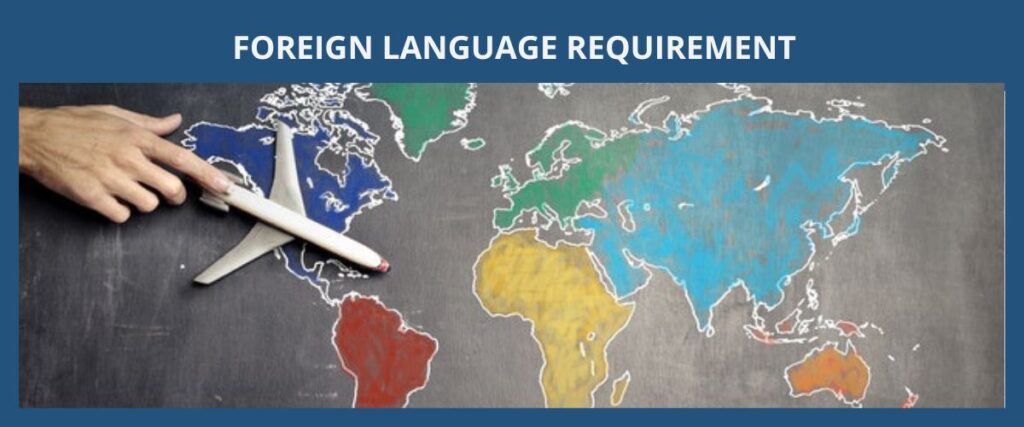
Traveling or Roving Employees
If the PERM job position requires traveling, the traveling requirements must be included in the job postings. Roving employees are workers based out of the U.S. sponsoring employer’s headquarters but are assigned to various worksites within the United States. For employees who will be working nationally, the location of the headquarter of the U.S. sponsoring employer should be used for the prevailing wage determination, recruitment efforts (job postings), and Notice of Filing.
For employees who will be a telecommuter working from home in an area that is different to the area of the U.S. sponsoring employer’s headquarters, the prevailing wage determination and recruitment efforts (job postings) should be done on based on the location of the primary site (e.g., where the work is being done such as a home worksite) and the Notice of Filing should be placed at the U.S. sponsoring employer’s headquarters.
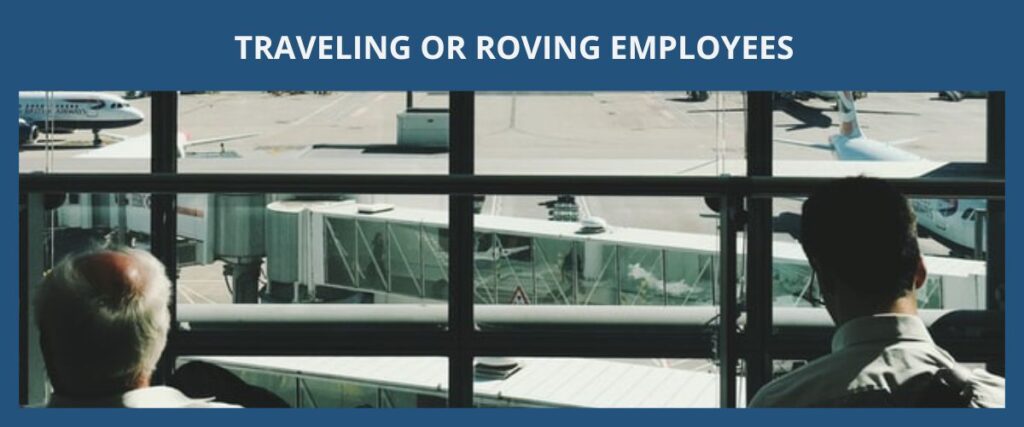
Highly Scrutinized Cases (Control Over U.S. Sponsoring Employer)
There are 3 types of foreign workers that will usually be highly scrutinized under the PERM labor certification due to the likelihood of being seen as having control and influence over the hiring and recruitment decisions of the U.S. sponsoring employer:
- The foreign worker has ownership in the U.S. sponsoring employer that is a partnership, sole proprietorship, or closely held corporation (i.e., a corporation that has a small number of shareholders and the shares are not traded in the securities market)
- A corporate officer, stockholder, owner, partner, incorporator of the U.S. sponsoring employer is a family member of the foreign worker
- There is a small number of employees
Foreign workers face a higher chance of denial under the PERM labor certification when:
- The foreign worker and the owner of the U.S. sponsoring which is a closely held corporation are family (e.g., cousins, wife, husband, aunts, uncles, grandparents, grandchildren, in-laws, stepfamily)
- The foreign worker is an officer of the U.S. sponsoring employer
- The foreign worker was in an executive position with the U.S. sponsoring employer or with a different company that has a corporate relationship with the U.S. sponsoring employer
- The foreign worker had a senior-level responsibility over the U.S. sponsoring employer’s business in the United States
There are 4 main steps in the general process to obtain an approved PERM Labor Certificate:
Step 1: Filing for a Prevailing Wage Determination Request (Form ETA-9141) with the National Prevailing Wage Center (NPWC)
The U.S. sponsoring employer must first obtain a determination on how much the green card worker should be paid by filing a prevailing wage determination request (Form ETA-9141) for the job position with the National Prevailing Wage Center (NPWC). Typically, the prevailing wage will be based on the U.S. Department of Labor’s OES Wage Data Survey, however, if the job position is covered under a collective bargaining agreement (CBA) negotiated between the U.S. sponsoring employer and the union then the prevailing wage will be the wage set forth in the CBA agreement unless the green card petition is for a professional athlete, higher education institution (e.g., colleges or universities), or a research organization.
The U.S. sponsoring employer must have the ability to pay the green card worker at least the prevailing wage of the PERM job position. The green card worker typically should be paid from the income of the business and not from the personal income of the business owner unless the U.S. sponsoring employer is a sole proprietorship or is a private household employer who is hiring domestic workers.
The processing time for the prevailing wage determination may take at least 3 to 4 months for the PERM labor certification and the recruitment process to find U.S. workers should start after obtaining the prevailing wage determination for the job position. The PERM recruitment process should be started (or the PERM labor certification should be filed) while the prevailing wage determination is still valid.
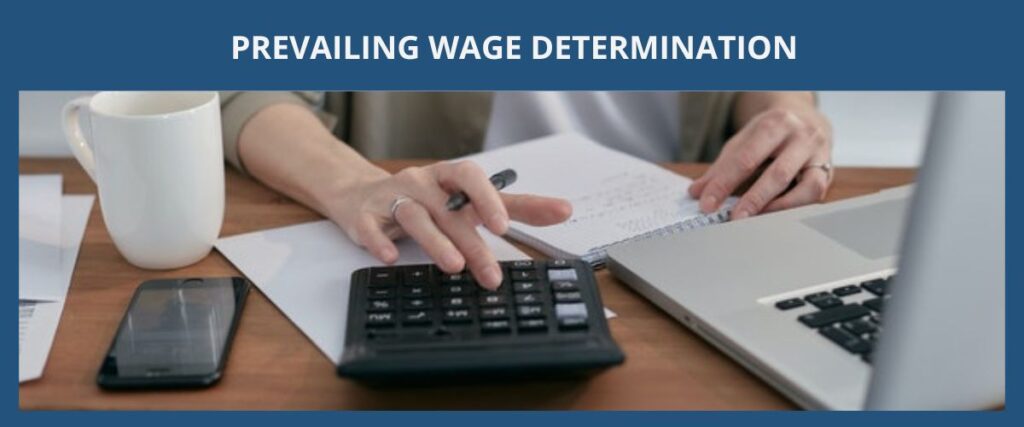
Academic, Nonprofit, Tax-Exempt Organizations (Special Procedure)
The prevailing wage for job positions at (1) higher education institutions (e.g., colleges, universities), (2) nonprofits that are affiliated or related to a higher education institution, (3) nonprofit research organizations, or (4) governmental research organizations are only determined by comparison with other similar organizations and not with the industry at large (which means the private industry will not be included).
The prevailing wage for job positions at higher education (and its research) institutions is based on the American Competitiveness and Workforce Improvement Act (ACWIA) higher education data.
Step 2: Completing the Recruitment of U.S. Workers under the PERM Labor Certification (Job Advertisements, SWA Job Order, Interviewing U.S. Job Applicants)
After obtaining an approved prevailing wage determination, the U.S. sponsoring employer must then start the recruitment process to make an effort in hiring U.S. workers and the evidence related to this recruitment process of U.S. workers must be kept for audits issued by the U.S. Department of Labor (DOL).
The recruitment process differs based on whether the job position under the PERM labor certification is for a professional or nonprofessional job position:
- Nonprofessional Job Positions: require a SWA job order and 2 print advertisements
- Professional Job Positions: requires a SWA job order, 2 print advertisements, and 3 additional supplemental recruitment forms
The recruitment process for U.S. workers must be done at least 30 days to 180 days (timeline) before the PERM labor certification application (Form ETA-9089) is filed. The only exception is a single supplemental recruitment for a professional job position can be filed within the 30-day quiet period (timeline) immediately before the PERM labor certification application is filed. The SWA job order must be posted for 30 days (time period). The required timeline and time periods under the PERM labor certification must be strictly followed to obtain an approval. The timeline and time periods are calculated differently under the PERM labor certification:
- Timelines: the next day of the day that the event occurred is counted as day one and the last day of the event is counted (e.g., the 30-day quiet period is actually 31 days)
- Time Periods: the day the event occurred is counted as day one and the last day of the event is counted (e.g., the 10 business days of the notice of filings, 30 days of the SWA job order)
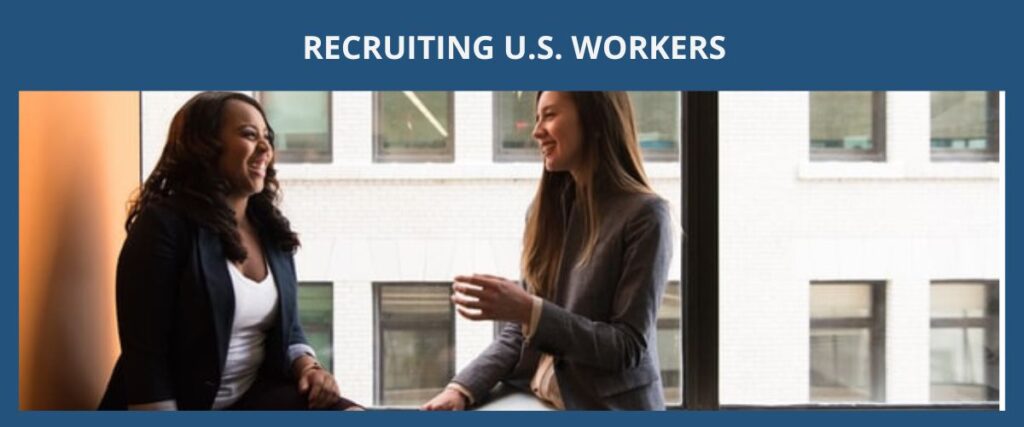
There are typically 4 main steps under the recruitment process of the PERM labor certification:
Process 1: 30-day SWA job order
The U.S. sponsoring employer must file a job order (i.e., job posting advertisement) with the State Workforce Agency (SWA) that governs the location of the worksite where the green card worker will be working at. The required SWA job order must be posted for at least 30 days.
Process 2: 2 Sunday Print Advertisements
The U.S. sponsoring employer must place job advertisements (of the green card job position) in a printed newspaper that is (1) generally circulated in the area of the worksite (typically the newspaper that is the most well-known and has the highest circulation in the area), (2) the most appropriate to the job occupation and to the workers that would likely apply for the job, and (3) most likely to be responded by qualified, able, willing, and available U.S. workers. The job advertisements in the printed newspaper must be placed on 2 Sundays (which can be consecutive Sundays).
There are 2 exceptions to the regular Sunday job advertisement requirements: (1) when the worksite is located in a rural area without a newspaper that has a Sunday edition, the Sunday advertisement can be placed in the edition that has the widest circulation in the area of the worksite, and (2) 1 newspaper advertisement can be placed in a printed professional journal if (a) the job position requires an advanced degree and experience, (b) the U.S. sponsoring employer normally places job postings for the job position in a professional journal, and (c) the professional journal would be most likely to be responded by qualified, able, willing, and available U.S. workers.
To prove that the job advertisements were actually placed in the newspapers on two Sundays under the PERM labor certification, the original tearsheet or an e-tearsheet from the printed newspaper that shows the job posting for the green card petition was placed and the date of when it was published must typically be kept as evidence in the audit file.
Process 3: Notice of Filing a PERM Labor Certification Application
The U.S. sponsoring employer must provide notice of this job opportunity at the worksite and notice that a PERM labor certification application will be filed for a foreign worker for this job position. The U.S. sponsoring employer must keep evidence that shows the notice was provided and a statement of where the notice was posted at the worksite unless the U.S. sponsoring employer is a private household employer that does not employ any U.S. workers.
The notice of filing the PERM labor certification application must:
- (1)
- (2)
- (3)
- be posted at a place (which can include physical postings or notice through the intranet, internet, or email notifications that usually list job opportunities) where U.S. workers can easily see (e.g., employee cafeterias or breakrooms, bulletin board by HR, or near wage and hour or occupational safety and health notices) for at least 10 business days (which can include Saturday, Sunday or holidays if there are employees working on those days at the worksite).
- include the details of the job position on the Form ETA-9089 (e.g., the wage, job duties). The wage range (which must be at least the prevailing wage rate) can be stated on the notice of filing instead of the specific wage offered to the foreign worker on the Form ETA-9089.
- state that the notice is provided due to the filing of a permanent labor certification application for a foreign worker and that any person can provide evidence regarding this application to the DOL's certifying officer (with the address of the National Processing Center).
- (1)
- be posted at a place (which can include physical postings or notice through the intranet, internet, or email notifications that usually list job opportunities) where U.S. workers can easily see (e.g., employee cafeterias or breakrooms, bulletin board by HR, or near wage and hour or occupational safety and health notices) for at least 10 business days (which can include Saturday, Sunday or holidays if there are employees working on those days at the worksite).
- (2)
- include the details of the job position on the Form ETA-9089 (e.g., the wage, job duties). The wage range (which must be at least the prevailing wage rate) can be stated on the notice of filing instead of the specific wage offered to the foreign worker on the Form ETA-9089.
- (3)
- state that the notice is provided due to the filing of a permanent labor certification application for a foreign worker and that any person can provide evidence regarding this application to the DOL's certifying officer (with the address of the National Processing Center).
If the job position is under a Collective Bargaining Agreement (CBA), then the notice of filing a PERM labor certification application should be given to the bargaining union representative.
Process 4: 3 Additional Forms of Recruitments (for Professional Job Positions)
For professional job positions under the PERM labor certification application, the U.S. sponsoring employer must also conduct 3 supplemental forms of recruitment (i.e., picking 3 of 10 types of job advertisements) in addition to the mandatory SWA job order and 2 Sunday print advertisements. All recruitment efforts must be done during 30 days to 180 days before the PERM labor certification application is filed except 1 supplemental form of recruitment which can be done during the 30-day quiet period immediately before the PERM labor certification application.
The 3 additional forms of recruitment can be:
- (1)
- (2)
- (3)
- (4)
- (5)
- (6)
- (7)
- (8)
- (9)
- (10)
- Job postings on the U.S. sponsoring employer's website (e.g., the careers or job opening sections of the website)
- Job postings on a job search website (e.g., craigslist, indeed, electronic version of a newspaper, etc.)
- An internal employee referral program with incentives (e.g., a specific amount of monetary incentive)
- Job advertisements through a trade or professional organization (e.g., newsletters, electronic journal, or website of the trade or professional organization)
- Job advertisements through a private recruiting firm
- Job postings on a local or ethnic newspaper
- Job advertisements through the radio or television
- Job advertisements at a job fair (should be related to the job occupation)
- Job advertisements through on-campus recruiting (typically for job positions that do not require experience)
- Job advertisements through a campus job placement office (which usually can be for professional job positions that require or do not require experience)
- (1)
- Job postings on the U.S. sponsoring employer's website (e.g., the careers or job opening sections of the website)
- (2)
- Job postings on a job search website (e.g., craigslist, indeed, electronic version of a newspaper, etc.)
- (3)
- An internal employee referral program with incentives (e.g., a specific amount of monetary incentive)
- (4)
- Job advertisements through a trade or professional organization (e.g., newsletters, electronic journal, or website of the trade or professional organization)
- (5)
- Job advertisements through a private recruiting firm
- (6)
- Job postings on a local or ethnic newspaper
- (7)
- Job advertisements through the radio or television
- (8)
- Job advertisements at a job fair (should be related to the job occupation)
- (9)
- Job advertisements through on-campus recruiting (typically for job positions that do not require experience)
- (10)
- Job advertisements through a campus job placement office (which usually can be for professional job positions that require or do not require experience)
There are no specific time requirements on how long these supplemental forms of job advertisements need to run.
*Contacting Former Employees (if U.S. Sponsoring Employer Had a Layoff within 180 days of Filing)
For U.S. sponsoring employers that had a layoff (i.e., involuntary termination without cause or prejudice such as reductions-in-force, downsizing, or restructuring) during the 180-day period prior to the filing of the PERM labor certification, there is an additional requirement where the U.S. sponsoring employer has to notify and consider all potentially qualified laid-off U.S. workers (which includes those in related job positions where the majority of job duties are the same) for the job position.
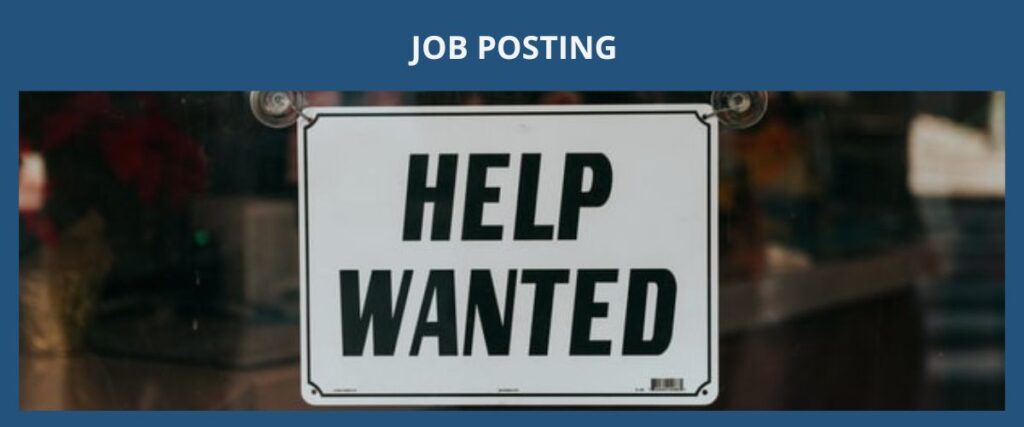
Good Faith PERM Recruitment
The U.S. sponsoring employer should make a good faith effort in considering any U.S. workers who apply for the job position. The U.S. sponsoring employer should actively contact the U.S. applicants in a timely manner (which is typically within 14 days) and on a rolling basis (which means not waiting until all resumes are received for the job position). Certified mail with return receipt requested will be the best documentation to show that the U.S. sponsoring employer made a good faith effort in responding to the U.S. applicant.
The U.S. sponsoring employer must timely respond to communications with the U.S. applicants and must have a reasonable justification if there is a delay. Factors that affect whether the U.S. sponsoring employer had a reasonable justification for the delay in response can include but are not limited to the ability of the U.S. sponsoring employer to anticipate the interference of the recruitment process, the ability to avoid that interference, and the attempts made to mitigate that interference.
Under the PERM labor certification process, U.S. applicants can only be lawfully rejected by the U.S. sponsoring employer for a job-related reason such as being unqualified (e.g., does not have the required minimum degree), unable (e.g., poor health, having poor references), unavailable, or unwilling (e.g., being offered the job position and declining it). For example, poor health, bad work references, and lack of English skills may be lawful job-related reasons to reject a U.S. applicant if it affects the U.S. applicant to do the job satisfactorily. Subjective reasons (e.g., poor communication skills, bad attitude) are typically not reasons to reject a U.S. applicant.
Additionally, a U.S. applicant cannot be lawfully rejected if they can obtain the skills necessary to perform the job within a reasonable period time of on-the-job training.
Bad Faith PERM Recruitment
Bad faith recruitment are efforts that discourage U.S. workers from applying for the job position such as asking for certain documents (e.g., reference letters, list of 3 references, documents that show the U.S. worker’s status, copies of portfolios and educational documentation, or requesting the U.S. applicant to complete a formal application form, etc.) before an interview can be scheduled.
PERM Recruitment Report (Audit File)
The U.S. sponsoring employer must prepare a recruitment report that includes (1) the recruitment steps taken, (2) a summary of the results of the recruitment (e.g., number of applicants, number of applicants hired or offered employment, number of applicants rejected in each category, and number of U.S. applicants rejected categorized by lawful job-related reasons). The recruitment report is not filed with the PERM labor certification but is prepared in case the U.S. Department of Labor (DOL) conducts an audit. The recruitment report and the related supporting evidence (e.g., documents of the recruitment efforts, resumes of applicants) for the PERM labor certification must be kept for 5 years.
Step 3: Filing the PERM Labor Certification Application (Form ETA-9089) with the U.S. Department of Labor (DOL)
After completing the recruitment process and not finding any U.S. workers for the job position, the U.S. sponsoring employer must go through a 30-day quiet period before filing for a PERM labor certification application (Form ETA-9089) with the U.S. Department of Labor (DOL). The prevailing wage determination (Form ETA-9141) must still be valid when the PERM labor certification application is filed with the U.S. Department of Labor (DOL)
Before filing for a PERM labor certification, the U.S. sponsoring employer must first create a PERM account online with the U.S. Department of Labor (DOL) and the U.S. sponsoring employer must be verified as an existing business based on the DOL’s database or by providing the evidence requested by the DOL (e.g., IRS issued FEIN documents, documents that show the U.S. sponsoring employer’s physical address).
After filing the PERM labor certification application, the U.S. sponsoring employer must respond in a timely fashion to the sponsorship verification email (where the U.S. sponsoring employer will answer 4 questions to confirm that it is aware of and wants to proceed with the PERM labor certification application for the foreign worker) sent by the U.S. Department of Labor (DOL).
An approved PERM labor certification is valid for 180 days from the date it was certified and it is only valid for the named foreign worker in the specific job position listed in the PERM labor certification (which means that foreign worker cannot be replaced by another foreign worker).
Step 4: Filing an Employment-Based Green Card Petition (Form I-140) with the USCIS
After obtaining an approved PERM labor certification (Form ETA-9089), the U.S. sponsoring employer must then file for an employment-based green card petition (Form I-140) with the USCIS while the PERM labor certification is still valid (i.e., within 180 days). The original PERM labor certification must be submitted with the employment-based green card petition to the USCIS.
An audit under the PERM Labor certification process means that the U.S. Department of Labor (DOL) will request the U.S. sponsoring employer to provide certain documents for examination. Under the PERM labor certification application, an audit may be done by the U.S. Department of Labor (DOL) randomly or because of certain pre-determined triggers (e.g., foreign language requirement, job requirements that are not normally required for a job position, or when there is a break in the foreign worker’s employment dates).
The documents requested (e.g., resumes of applicants and documents that show the U.S. sponsoring employer contacted those applicants) under the PERM labor certification application audit must be submitted within 30 days of the audit notification. One extension for up to a 30-day period can be granted under certain circumstances such as due to factors beyond the U.S. sponsoring employer’s control (e.g., the need to obtain documents from others in the industry).
The U.S. sponsoring employer cannot withdraw an application to avoid responding to an audit, however, a withdrawal request can be submitted together with an audit response if there is a valid reason to withdraw (e.g., the foreign worker is not working for the U.S. sponsoring employer anymore). If the U.S. sponsoring employer fails substantially to provide the required documents (e.g., the Notice of Filing posted, documents that show the U.S. sponsoring employer contacted all applicants), the PERM labor certification application will be denied and future filings of PERM labor certification applications may be placed under supervised recruitment for 2 years.
Potential reasons of an audit under the PERM labor certification:
- The foreign worker has ownership in the U.S. sponsoring employer that is a partnership, sole proprietorship, or closely held corporation (i.e., a corporation that has a small number of shareholders and the shares are not traded in the securities market)
- A corporate officer, stockholder, owner, partner, incorporator of the U.S. sponsoring employer is a family member of the foreign worker
- There is a small number of employees
- Job requirements exceed (are higher than) what is listed as normal in the SVP/O*Net Job zone
- Foreign language is listed as a job requirement
- The work schedule is non-traditional, multiple, rotating, split shift
- The job position is for a live-in domestic service worker that does not involve medical or instructional services (e.g., nannies, housekeepers, maids, cooks, or other household staff)
- The U.S. sponsoring employer required different minimum requirements for the employees who worked in the same job position in the past (which can also be justified where there was a significant change in the circumstances, industry, technological capabilities)
- Cooking specialization (e.g., chefs and cooks in specific cultural cuisine)
- The job position requires job duties from different occupations (e.g., a worker who is required to fly a plane and repair it which would make the job position a pilot-mechanic, however, this can also be justified if this is a normal requirement in the industry or geographic area)
- Requiring an educational degree with double majors (especially when the 2 fields of study are unrelated such as marketing and industrial engineering)

Supervised Recruitment under PERM Labor Certification
Supervised recruitment under the PERM labor certification application is where all job postings must be approved by the DOL and the DOL will (1) instruct where the job postings can be placed, (2) instruct when the job postings can be run, and (3) the DOL will receive the responses of U.S. applicants on behalf of the U.S. sponsoring employer.
Supervised Recruitment under the PERM labor certification application can be ordered by the DOL due to reasons such as:
- Substantial failure to submit required documentation
- Inadequate documentation
- Material misrepresentation
- General layoffs in the field of the job position
- The U.S. sponsoring employer routinely do not respond to audits
- PERM labor applications refiled within the same calendar year of an audit denial or audit withdrawal
- Mailed applications
- Other appropriate reasons
PERM Supervised Recruitment Process
There are 5 main steps under the supervised recruitment of the PERM labor certification:
- Process 1:
- The U.S. sponsoring employer must submit a draft of the job postings to the certifying officer for review within 30 days of being notified of the required supervised recruitment.
- Process 2:
- After the job postings draft is sent to the certifying officer, the certifying officer may send an assessment/correction letter to the U.S. sponsoring employer if there are any changes or additions that need to be made.
- Process 3:
- If the draft of the job postings is approved, then the certifying officer will send a recruitment instructions letter that details the source of publications that the job postings can be placed and when the job postings must be placed. The U.S. sponsoring employer can only start recruitment after it receives the recruitment instructions letter.
- Process 4:
- Print advertisements of the job posting must be placed in a (1) newspaper that has a general circulation for 3 consecutive days and it must include 1 Sunday, or (2) a trade, professional, or ethnic publication of its next available published edition. Typically, the U.S. sponsoring employer will be instructed to place the job postings in a number of national or industry-focused job search websites. The certifying officer will receive and forward all responses and resumes to the U.S. sponsoring employer. Every applicant must be considered and rejections can only be based on lawful job-related reasons.
- Process 5:
- A detailed recruitment report signed by the U.S. sponsoring employer must be submitted to the DOL after consideration of all applicants within 30 days of receiving a Recruitment Report Letter from the certifying officer.
PERM Labor Certification Debarment
A debarment (i.e., cannot be issued any labor certifications) may happen if there is a practice or pattern of not complying with the supervised recruitment process (e.g., repeated requests to withdraw applications under supervised recruitment, withdrawal of half of the cases under supervised recruitment) under the PERM labor certification process. Future applications filed for the same foreign worker or any other foreign worker may be placed under supervised recruitment even if the request to withdraw an application under the PERM supervised recruitment is approved.
An approved PERM labor certificate serves as evidence that there are no qualified and available U.S. workers to fill the job position offered in the employment-based green card petition. For EB2 green cards, an approved PERM labor certificate must be obtained before the U.S. sponsoring employer can file for an EB2 green card petition unless a National Interest Waiver (NIW) or a Physician’s National Interest Waiver (PNIW) is filed with it (or the occupation falls under Schedule A). For EB3 green cards, an approved PERM labor certificate must be obtained before the U.S. sponsoring employer can file for an EB3 green card petition unless the occupation falls under Schedule A.
The PERM labor certification process required for most employment-based green card petitions is complex due to the appropriate descriptions for the job positions that need to be submitted and the multiple timelines and time periods that need to be strictly followed to obtain an approval. It is common practice and strongly encouraged to obtain an attorney for employment-based green card petitions and PERM labor certifications.
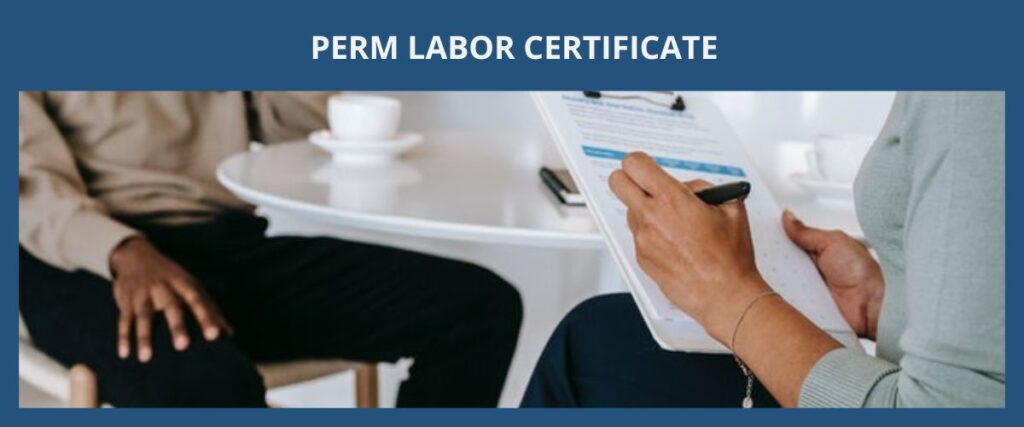
The following is a generalized and simplified summary of the timeline and requirements for a PERM labor certification.
PERM Recruitment Requirements
The PERM labor certification process differs on whether the job position offered in the employment-based green card petition is defined as a professional job position (i.e., requires at least a Bachelor’s degree) or a nonprofessional job position (i.e., does not require at least a Bachelor’s degree). There are also special PERM labor certification processes for college and university teachers and professional athletes.
Most nonprofessional PERM job positions require:
- a SWA job order
- 2 print advertisements
Most professional PERM job positions require:
- a SWA job order
- 2 print advertisements
- 3 additional supplemental recruitment forms (job advertisements)
*U.S. Sponsoring employers that had a layoff within the 180-day period immediately before filing for the PERM labor certification must additionally contact former employees for recruitment.
PERM Labor Certification Timeline
- Step 1:
- Step 2:
- Step 3:
- Step 4:
- Step 5:
- Step 6:
- Determining the appropriate job descriptions and requirements
- Obtaining an approved prevailing wage determination from the NPWC (typically 3 to 4 months)
- Placing a job order through the SWA for 30 days (plus additional days in certain circumstances)
- Placing the mandatory job postings in 2 Sunday editions of a newspaper or in professional or trade journals if it is the second job posting for professional job positions (typically 1 to 2 weeks)
- Posting the Notice of Filing of a PERM labor certification application at the worksite (or providing the notice to the union or through in-house media) for at least 10 business days
- Placing 3 job postings through 3 supplemental forms of recruitment for professional job positions (typically 1 to 2 months)
- Step 1:
- Step 2:
- Step 3:
- Step 4:
- Step 5:
- Step 6:
- Determining the appropriate job descriptions and requirements
- Obtaining an approved prevailing wage determination from the NPWC (typically 3 to 4 months)
- Placing a job order through the SWA for 30 days (plus additional days in certain circumstances)
- Placing the mandatory job postings in 2 Sunday editions of a newspaper or in professional or trade journals if it is the second job posting for professional job positions (typically 1 to 2 weeks)
- Posting the Notice of Filing of a PERM labor certification application at the worksite (or providing the notice to the union or through in-house media) for at least 10 business days
- Placing 3 job postings through 3 supplemental forms of recruitment for professional job positions (typically 1 to 2 months)
- Step 1:
- Determining the appropriate job descriptions and requirements
- Step 2:
- Obtaining an approved prevailing wage determination from the NPWC (typically 3 to 4 months)
- Step 3:
- Placing a job order through the SWA for 30 days (plus additional days in certain circumstances)
- Step 4:
- Placing the mandatory job postings in 2 Sunday editions of a newspaper or in professional or trade journals if it is the second job posting for professional job positions (typically 1 to 2 weeks)
- Step 5:
- Posting the Notice of Filing of a PERM labor certification application at the worksite (or providing the notice to the union or through in-house media) for at least 10 business days
- Step 6:
- Placing 3 job postings through 3 supplemental forms of recruitment for professional job positions (typically 1 to 2 months)
The 3 supplemental forms of recruitment can be job advertisements through:
- U.S. sponsoring employer’s website (e.g., the careers or job opening sections of the website)
- Job search website (e.g., craigslist, indeed, electronic version of a newspaper, etc.)
- Employee referral program with incentives (e.g., a specific amount of monetary incentive)
- Trade or professional organization (e.g., newsletters, electronic journal, or website of the trade or professional organization)
- Radio or television
- Local or ethnic newspaper
- Job fair (should be related to the job occupation)
- On-campus recruiting (typically for job positions that do not require experience)
- Campus job placement office (which usually can be for professional job positions that require or do not require experience)
- Private recruiting firm
* There are no specific time requirements on how long these supplemental forms of job advertisements need to run.
- Step 7:
- Review the resumes received and interview the job applicants (typically 1 month and can include time during the 30-day quiet period)
- Step 7:
- Review the resumes received and interview the job applicants (typically 1 month and can include time during the 30-day quiet period)
- Step 8:
- Step 9:
- Step 10:
- A 30-day quiet period before filing the PERM labor certification
- Finalization of the recruitment report
- Filing and obtaining an approved PERM labor certification with the DOL
- Step 8:
- A 30-day quiet period before filing the PERM labor certification
- Step 9:
- Finalization of the recruitment report
- Step 10:
- Filing and obtaining an approved PERM labor certification with the DOL
If you have a PERM labor certification related immigration question, please fill out our form first or send us an email with the required information and we will do our best to respond in 48 hours.
How we can help?
Attorneys are typically retained in obtaining approved PERM labor certificates under most employment-based green card petitions (EB2 green card petitions and EB3 green card petitions) due to the complexity of the procedure. We can help with the challenges of appropriately describing the job duties under the PERM labor certification, advise on the compliance requirements related to the recruitment documentation, and keep in check the multiple timelines and time periods of the recruitment process for U.S. workers.
What does the typical process look like to retain (hire) us?
- Step 1:
- Step 2:
- Step 3:
- Step 4:
- Step 5:
- a.
- b.
- c.
- Step 6:
- Step 7:
- Step 8:
- Fill out the form (with some basic information on what your immigration needs are)
- Sign up and log into the client portal to schedule an appointment online
- Attend scheduled appointment (typically a phone call or zoom meeting)
- Retainment (signing a contract to hire us)
- Start processing case
- Gathering required documents
- Preparing paperwork
- Confirming contents of documents that will be submitted
- Filing the case
- Following up on the status of the case
- Close the case when a final determination is issued
- Step 1:
- Step 2:
- Step 3:
- Step 4:
- Step 5:
- a.
- b.
- c.
- Step 6:
- Step 7:
- Step 8:
- Fill out the form (on what your immigration needs are)
- Sign up and log into the client portal to schedule an appointment
- Attend scheduled appointment (typically a phone call or zoom)
- Retainment (signing a contract to hire us)
- Start processing case
- Gathering required documents
- Preparing paperwork
- Confirming contents of documents that will be submitted
- Filing the case
- Following up on the status of the case
- Close the case when a final determination is issued
- Step 1:
- Step 2:
- Step 3:
- Step 4:
- Step 5:
- a.
- b.
- c.
- Step 6:
- Step 7:
- Step 8:
- Fill out the form (on what your immigration needs are)
- Sign up and log into the client portal to schedule appointment
- Attend scheduled appointment (typically a phone call or zoom)
- Retainment (hire us)
- Start processing case
- Gathering required documents
- Preparing paperwork
- Confirming content of documents that will be submitted
- Filing the case
- Following up on the case status
- Close the case when a final determination is issued

